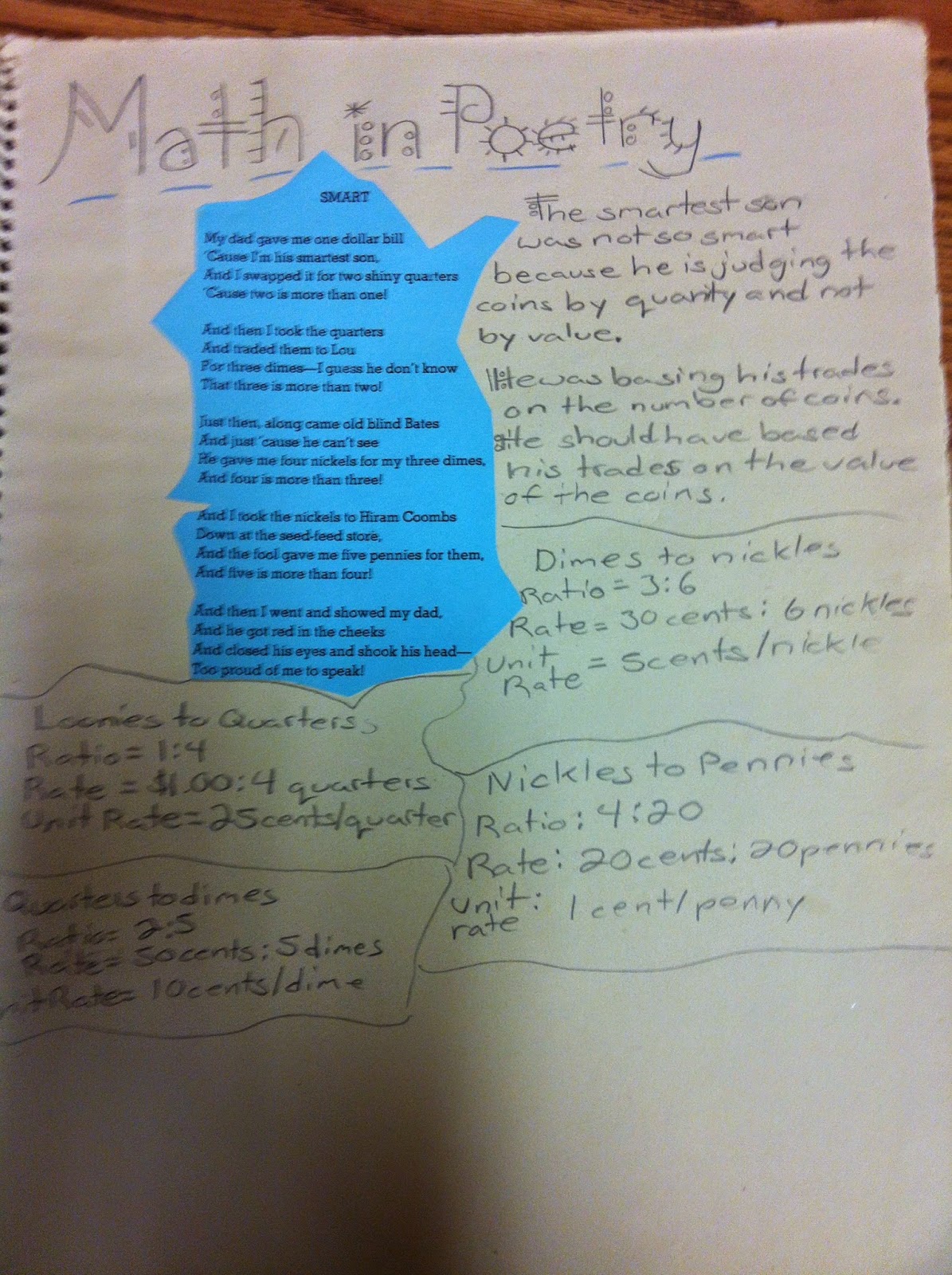Here is another great
book I read in my Math class.
* Please note that some of the links in this post are affiliate links*
* Please note that some of the links in this post are affiliate links*
Where
the Sidewalk Ends by Shel Silverstein, more specifically the poem, “Smart”.
Ok, so it’s not technically a story but it
will still make a great addition to your math lesson. I love to use this particular poem during out
unit on ratios and rates. I usually choose to read this poem to the students
after we have worked with ratios for a few days and before I introduce rates
Quick summary
-The “smartest” son starts out with 1 dollar, but after making a few trades he
ends up with 5 cents. His reasoning – 5 is more than 1.
For this activity I
read the whole poem aloud to the students. They usually think it is pretty
funny, and it doesn't take long for them to figure out the “problem” in the
poem. Immediately after reading the poem, I provide each student with their own
copy, so that they can read it again on their own and have them reflect on the
poem in a quick-write. A “quick-write” is a timed period that students are
asked to write their immediate thoughts and feelings about something. The goal
is for their pencil to not leave the paper until time is up. I usually provide
2-3 minutes for this particular activity.
Afterwards, we have a discussion about the poem and why the smartest son
is not so smart. My favorite answer that a student came up with was, “Maybe he
was smart, just not math smart”.
I
tell all the students since they are all much smarter than the smartest son;
they need to determine what he should have traded for if he really was the smartest
son. I then have the students determine the ratios,
rates and unit rates for all of the combinations found in the poem.
This is such a cute poem, I know yours students will love it!
Interested in incorporating more reading in your math
class? Check out my “Math Stories”
Collection.


.jpg)







.jpg)









.jpg)
.jpg)
.jpg)
.jpg)
.jpg)
.jpg)
.jpg)
.jpg)
.jpg)
.jpg)
.jpg)
.jpg)

.jpg)
.jpg)
.jpg)
.jpg)
.jpg)
.jpg)
.jpg)
.jpg)
.jpg)
.jpg)
.jpg)
.jpg)
.jpg)

.jpg)
.jpg)
.jpg)
.jpg)
.jpg)
.jpg)
.jpg)
.jpg)
.jpg)
.jpg)
.jpg)
.jpg)
.jpg)
.jpg)
.jpg)
.jpg)
.jpg)
.jpg)
.jpg)
.jpg)
.jpg)
.jpg)
.jpg)
.jpg)
.jpg)
.jpg)
.jpg)
.jpg)
.jpg)
.jpg)
.jpg)
.jpg)









